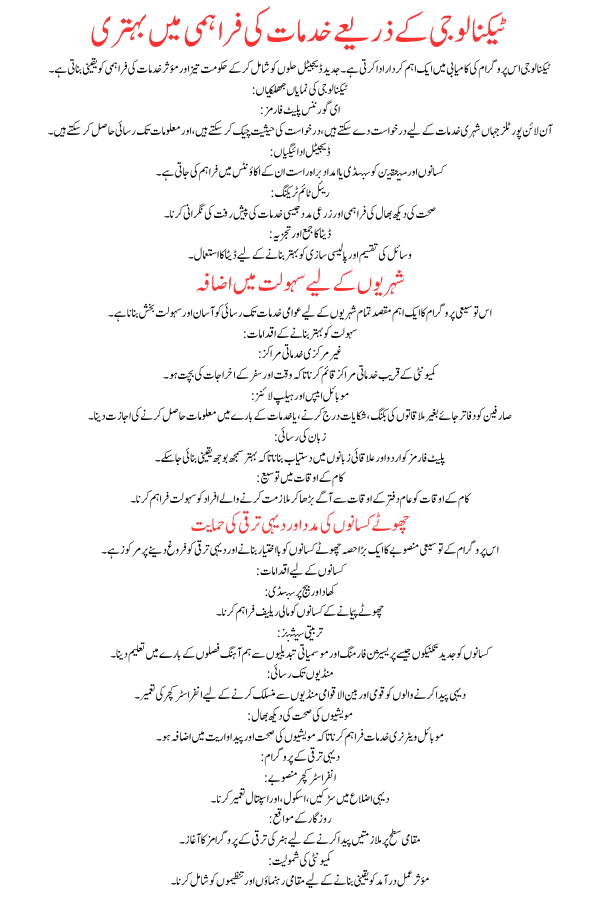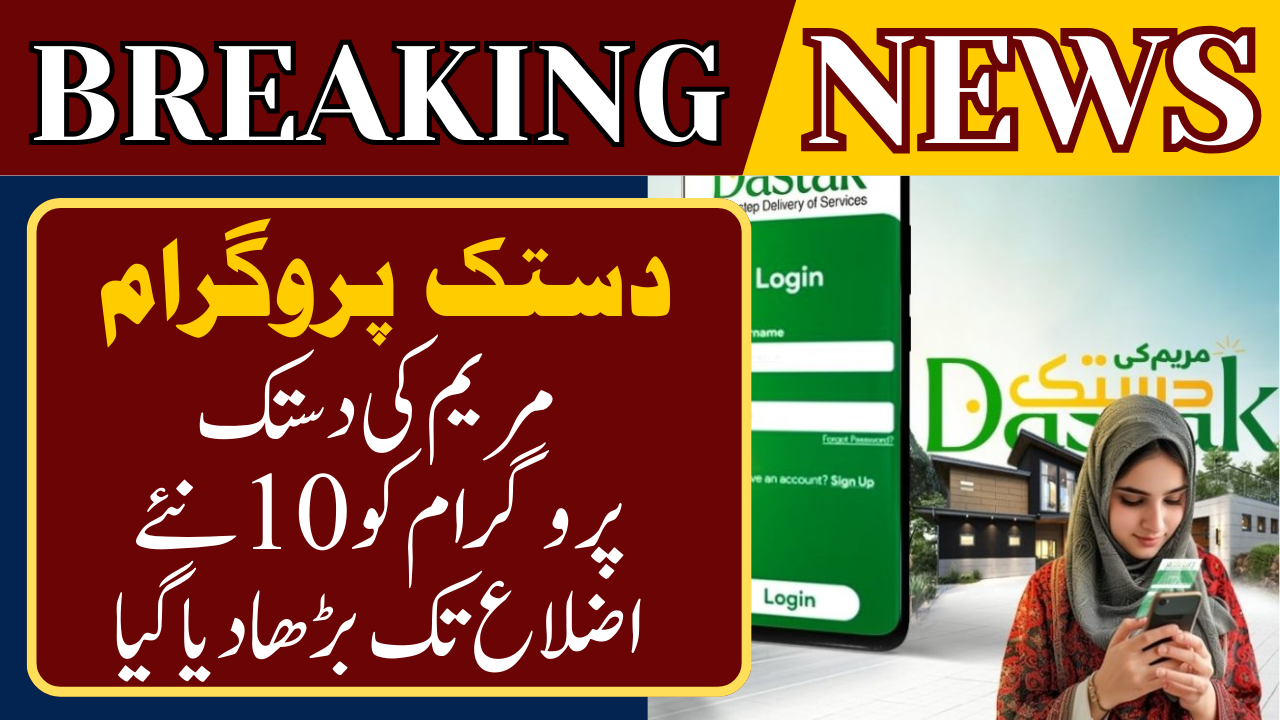Maryam Ki Dastak Program
The government of Pakistan is taking significant steps to ensure equitable development and access to essential services for all citizens. One such initiative involves the expansion of Maryam Ki Dastak Program to new districts, especially targeting rural areas and underserved communities. This expansion is designed to improve service delivery, enhance convenience for citizens, and foster rural development by supporting small farmers.
Quick Information Table
| Program Name | Public Services Expansion Programme |
| Start Date | Ongoing |
| End Date | No specific end date; long-term |
| Assistance Provided | Digital services, farming support, rural uplift |
| Application Method | Both online and offline |
Expanding the Programme to New Districts
Expanding Maryam Ki Dastak Program to additional districts is a crucial part of the government’s strategy to ensure that no region is left behind in development. This initiative prioritizes districts with limited access to healthcare, education, financial support, and agricultural resources.
Objectives of the Expansion
- Bridge the Rural-Urban Divide: Provide rural areas with the same quality of public services as urban centers.
- Boost Regional Development: Focus on underserved and economically weaker districts.
- Promote Inclusivity: Ensure every citizen can access essential services.
Read More Info:Sindh Govt Announces E-Taxi Programme For Youth 2024
Key Features of the Programme Expansion
The expanded Maryam Ki Dastak Program includes several innovative features aimed at addressing the unique challenges of each district.
Features
- Mobile Service Units: Bring healthcare, education, and other public services to remote areas.
- Digital Infrastructure: Develop internet access and mobile applications for easy service delivery.
- Tailored Solutions: Address district-specific issues, such as agricultural support in farming regions or skill development in industrial areas.
- One-Window Operations: Streamline administrative processes to avoid delays and confusion.
Improving Service Delivery through Technology
Technology plays a vital role in the success of this program. By incorporating advanced digital solutions, the government ensures faster and more efficient service delivery.
Technology Highlights
- E-Governance Platforms: Online portals where citizens can apply for services, check the status of applications, and access information.
- Digital Payments: Enable farmers and beneficiaries to receive subsidies or assistance directly into their accounts.
- Real-Time Tracking: Monitor the progress of services like healthcare delivery and agricultural support.
- Data Collection and Analysis: Use data to improve resource allocation and policymaking.
Read More Info:BISP Disbursing 10500 Payment to 180000 Beneficiaries In Sargodha
Enhancing Convenience for Citizens
One of the key goals of this expansion is to make accessing public services as easy and convenient as possible for all citizens.
Measures to Improve Convenience
- Decentralized Service Centers: Establish service centers closer to communities to save time and travel costs.
- Mobile Apps and Helplines: Allow users to book appointments, submit complaints, or inquire about services without visiting offices.
- Language Accessibility: Ensure platforms are available in Urdu and regional languages for better understanding.
- Extended Working Hours: Offer services beyond regular office hours to accommodate working individuals.
Supporting Small Farmers and Rural Development
A significant part of the expanded program focuses on empowering small farmers and driving rural development.
Initiatives for Farmers
- Subsidies on Fertilizers and Seeds: Provide financial relief to small-scale farmers.
- Training Sessions: Educate farmers on modern techniques like precision farming and climate-resilient crops.
- Access to Markets: Build infrastructure to connect rural producers with national and international markets.
- Livestock Healthcare: Mobile veterinary services to improve the health and productivity of livestock.
Rural Development Programs
- Infrastructure Projects: Build roads, schools, and hospitals in rural districts.
- Employment Opportunities: Launch skill development programs to create jobs locally.
- Community Engagement: Involve local leaders and organizations to ensure effective implementation.
Read More Info: Free Wi-Fi Across Punjab with Maryam Nawaz’s

Government’s Commitment to Accessible Public Services
The expansion of public service programs reflects the government’s dedication to making essential services accessible to all Pakistanis.
Vision for the Future
- Equitable Development: Ensure that resources are distributed fairly across all regions.
- Sustainability: Focus on long-term impact through environment-friendly practices and resilient infrastructure.
- Transparency: Maintain accountability through real-time monitoring and feedback mechanisms.
The government’s efforts aim to empower individuals and uplift communities, fostering a sense of national unity and progress.
Conclusion
The expansion of Maryam Ki Dastak Program to new districts is a transformative step toward a more inclusive and equitable Pakistan. By leveraging technology, supporting small farmers, and addressing the specific needs of underserved regions, the government is paving the way for sustainable development. This initiative not only improves the quality of life for millions but also strengthens the nation’s economic and social fabric.
Read More Info:CM Higher Education Internship Program
FAQs
1. What areas are prioritized in this expansion?
Underserved districts, particularly rural and economically weaker areas, are the focus of the expansion.
2. How can citizens access these services?
Citizens can access services through mobile units, service centers, and online platforms.
3. What support is available for farmers?
Farmers receive subsidies, training, market access, and healthcare for livestock as part of the program.
4. How does technology improve service delivery?
Technology ensures faster processes, digital payments, real-time tracking, and e-governance for enhanced convenience.
5. Are these services free of cost?
While many services are free, some, like agricultural inputs, are subsidized to make them affordable.
Read More Info:AIOU Admission Form Apply Online Now
This comprehensive guide provides all the information needed about the program expansion, ensuring citizens can take full advantage of these public services.
